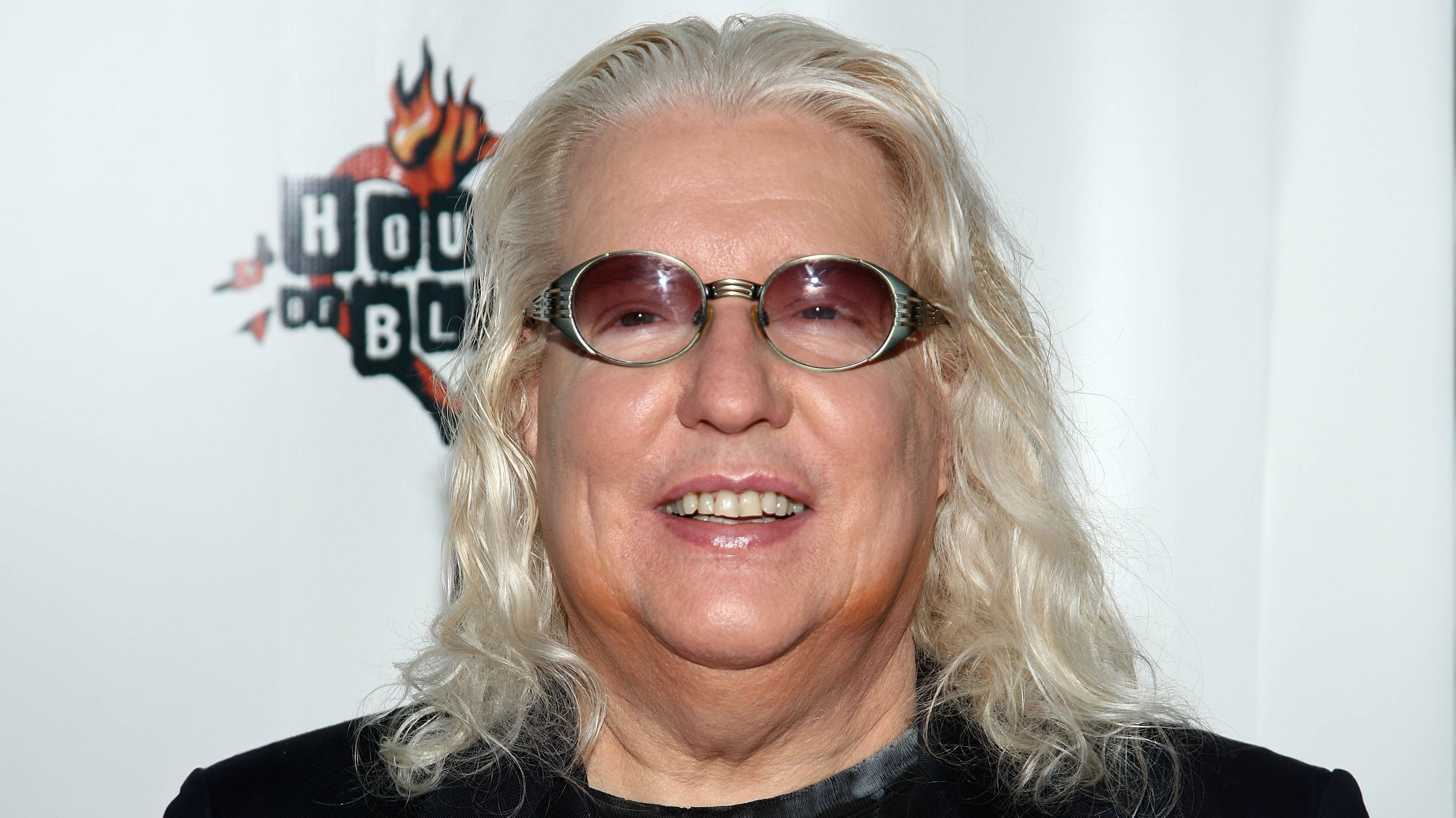Maelstrom & Louisahhh: "The world feels ready to swallow a message that’s intentionally disruptive. We call it a benevolent anarchy"
After a decade of collaboration, techno rock duo Maelstrom & Louisahhh release their debut album. Danny Turner finds them at the peak of their powers
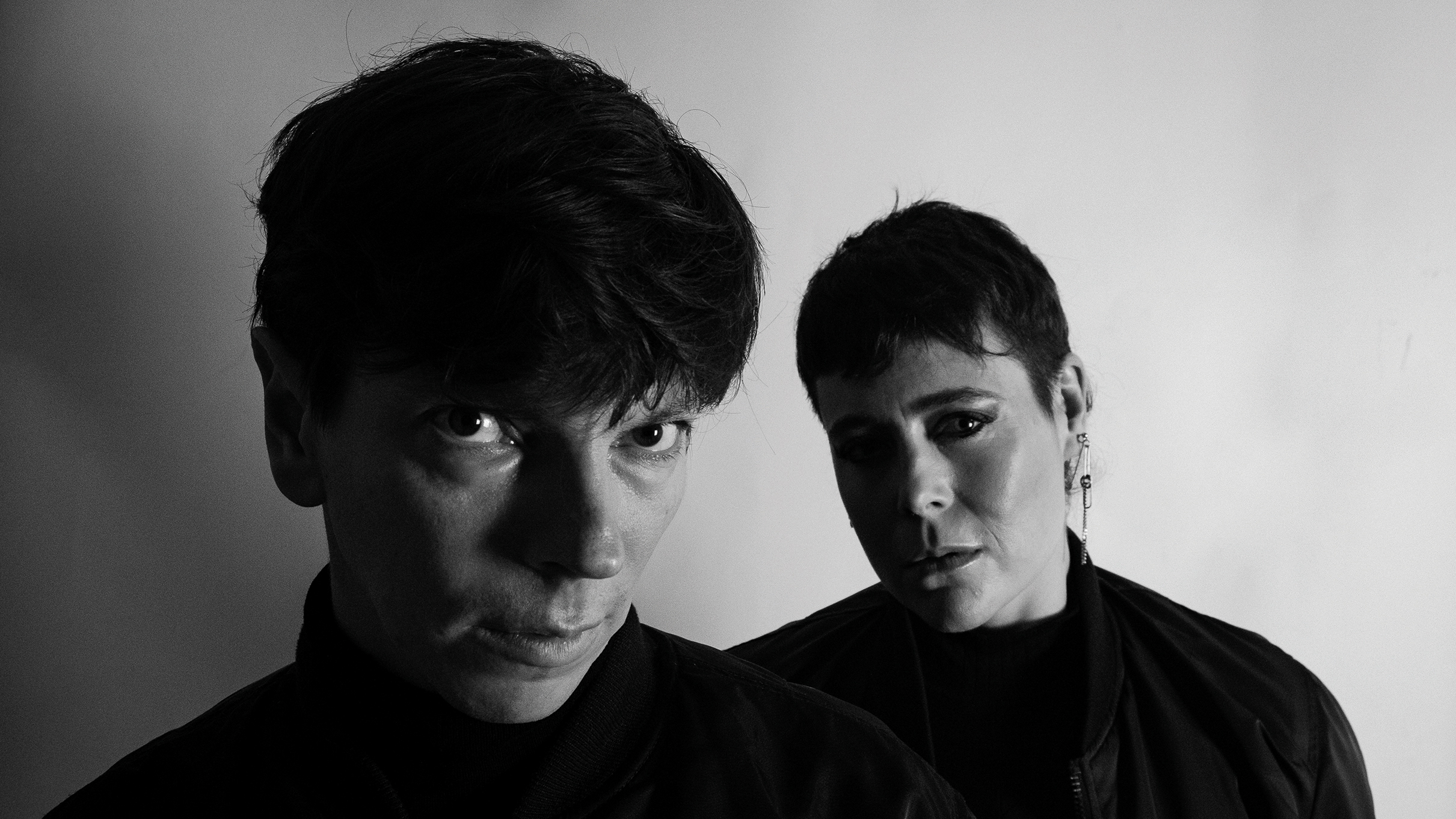
Despite having disparate musical upbringings, Joan-Mael Péneau’s techno/rave background has merged seamlessly with Louisa Pillot’s New York indie-rock past to forge an enduringly successful partnership.
Since the release of the duo’s debut EP Translations in 2013, the twosome have explored numerous gritty excursions into vocal-based techno rock while creating the RAAR label for their own releases and others.
After ten years working together, their debut album Sustained Resistance is a perfectly timed celebration of their hard-hitting amalgamation of styles and political commentary.
The LP marks a new chapter in Maelstrom & Louisahhh’s creative growth, with its driving, club-ridden aesthetic scouring the industrial/EBM terrain, amidst vocals riven with polemic outrage and post-pandemic angst.
Tell us a little about your musical backgrounds.
Maelstrom: “For me it was about going to illegal rave parties in the late ’90s when I was 16 or 17. After the criminal justice bill, people like Spiral Tribe started coming to Europe from the UK and organising free parties around France.
“These guys were obviously DJing but some were playing live. They’d bring their equipment onto the dancefloor in front of the sound system and that made it really easy to understand what type of gear they were using and how. At that age, it was like listening to magic.”
Get the MusicRadar Newsletter
Want all the hottest music and gear news, reviews, deals, features and more, direct to your inbox? Sign up here.
Louisahhh: “My background is completely different. I played guitar, piano and sang in choirs until my dad took me to see Nine Inch Nails when I was 11 – thanks Dad [laughs]! Music was a way for me to understand how to feel comfortable inside my own body and the world around me – I was obsessed with Garbage, NIN and Smashing Pumpkins and started going to clubs in New York.
“I felt socially awkward but decided to DJ and try to control the energy in the room – it also gave me an excuse not to talk to anybody in a club. My secret dream was to be a front woman in a band, but it felt very scary to live that dream until I started writing and performing vocals on other people’s tracks.
“I didn’t have a lot of confidence in my production skills so I started releasing my own music collaboratively, and Mael played a big part in that.”
When did you first gain access to gear?
M: “I learned a lot from a magazine in France called KR Home-studio and there was a music gear shop in my home city of Nantes, so I started talking to them to try to understand the cheapest way to buy my first piece of equipment.
“At first that was an Akai S20 sampler, which had no sequencer so I had to put all the samples on top of each other, and then a Korg MS-20 semi-modular synth. I later found out about Roland grooveboxes like the MC-303, which was a big deal at the time.”
What were you recording onto?
M: “At first I recorded live to cassette tape but then I pooled some money together with a friend and bought a MiniDisc four-track recorder, which was cool because it was digital and editable.
“I couldn’t afford fancy compressors, EQs and delays, so doing it in the box gave me access to a certain level of production that was impossible to attain without spending money on a lot of gear or going into a studio.
“After a few years I found the workflow was painful and I couldn’t find a way to make music in a way that was natural, so I started composing everything using hardware only and recording, editing and mixing tracks in the box.”
As a woman in a male-dominated industry, especially electronic music, the pressure to show up and be really fucking good was intimidating
L: “At the beginning, I felt pretty anxious and stupid around technology – it’s only now that I’m getting my production chops in line in a way that enables the music to feel like me. As a woman in a male-dominated industry, especially electronic music, the pressure to show up and be really fucking good was intimidating. I didn’t feel I had the discipline to EQ kick drums, learn how to be a good producer or have any patience for that, so I played to my strengths and used my voice and ability to write songs.
“At first, I was hesitant to be a woman in dance music who was all about shiny disco balls and talking about nothing. If I was going to use lyrics and my voice then it would have to have integrity, even if it was veiled in messages about the dancefloor and body music.”
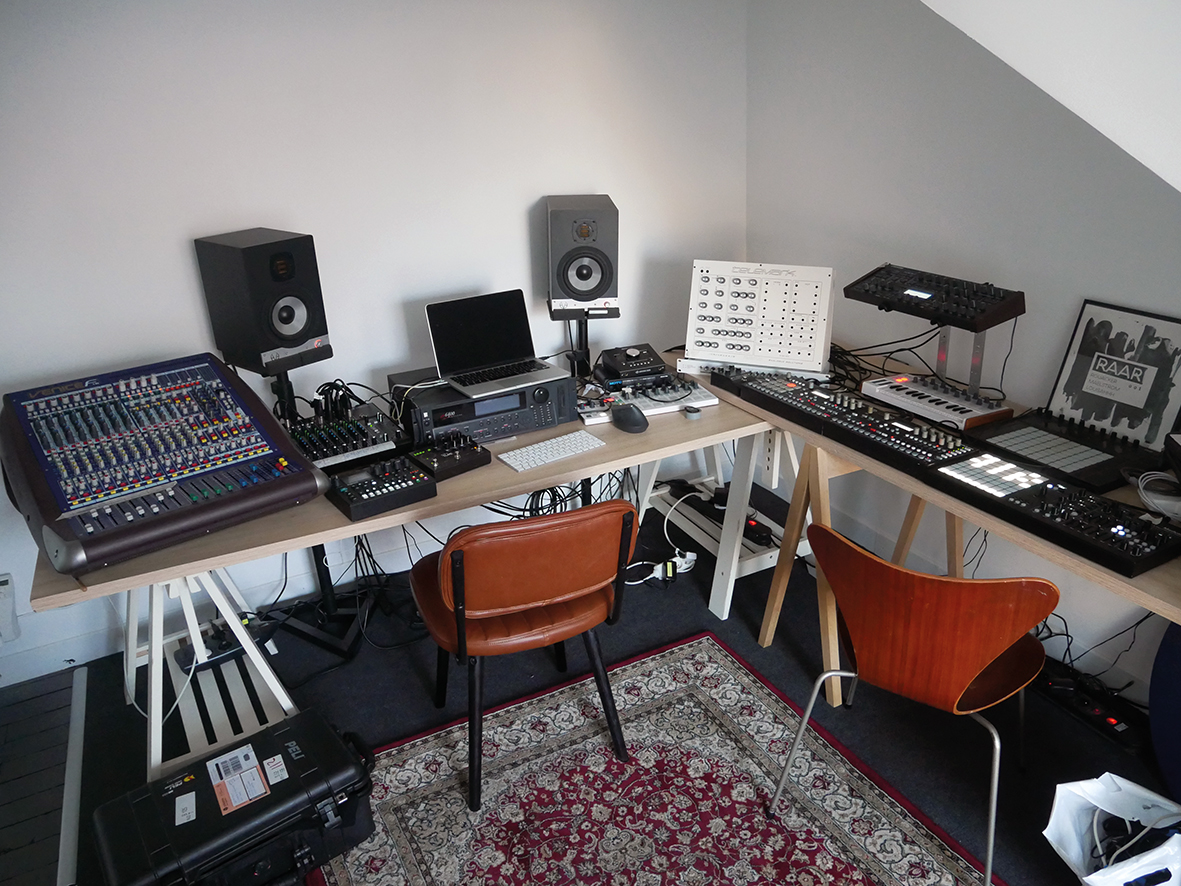
So, when did you guys first meet?
M: “We met ten years ago. Louisahhh had just recorded a track with the French producer Brodinski on his new label, Bromance, but hadn’t sold any records yet. I was working with the same management company at the time and they were trying to get her to record her first solo EP.
“She’d been trying to find a sound that would work but had a hard time finishing tracks or creating something that felt true to her. Brodinski suggested we try working together because he felt we had a lot in common musically, so she showed up at my studio in Nantes – a bit like an exchange student.”
From what we understand, you immediately hit it off?
M: “We recorded the EP Translations in about three days. Despite having very different backgrounds, we were super-happy with the music and the relationship was so easy and fluid.
“We met in an area where music has to be political and open new doors as a way to express, not rebellion, but the possibility of being different – and that still shapes the music we’re making today.”
How do you think your amalgamation of styles has represented you musically? It seems to veer from techno rock into EBM and industrial.
M: “I came from hardcore techno, drum & bass and illegal raves and Louisahhh came from a punk, garage rock and NY indie-electro background. Obviously, we’re both big fans of Front 242, Nitzer Ebb and EBM in general, but it’s tricky to answer your question because I discovered that scene a bit later in my career so I’m not sure to what extent it has influenced us.
The world feels ready to swallow a message that’s intentionally disruptive. We call it a benevolent anarchy
“Obviously, that music is electronic with vocals and lyrical content, which is not prevalent in underground dance music as a whole, but it made us understand that it’s possible to create songs with a meaning and a message on hard, danceable electronic music.”
L: “That music definitely has a world view that defines itself as refusing to drink the Kool-Aid or be one of the happy many. After a decade of working together, Mael and I have definitely moved from needing to people-please or be likeable into a space where, because of recent events, the world feels ready to swallow a message that’s intentionally disruptive. We call it a benevolent anarchy.”
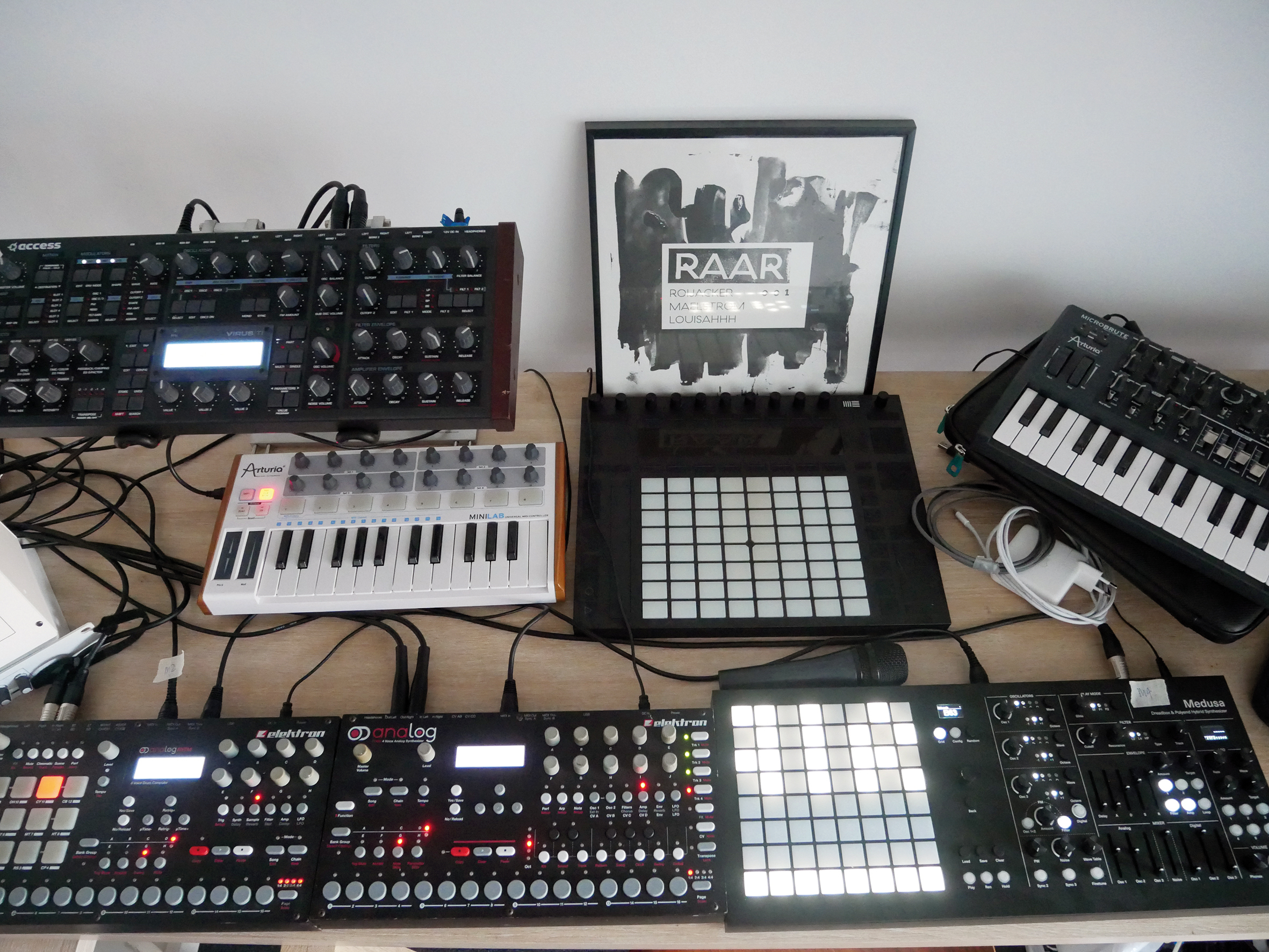
Going a step further, you started the RAAR label. Was it specifically set up for Maelstrom & Louisahhh releases?
M: “We had a vision for it and have released for other artists. The idea was similar to what we were trying to do with our own music in that we felt there was a need for a place for people who didn’t belong anywhere to find a home. The way we select music to release is exactly that – it can only be released on RAAR if there’s no place for it elsewhere.
“Obviously, we have to like it too, but there are still types of music that don’t really find their place in the dance music ecosystem and we want to use our careers and exposure to push sounds that are difficult to access for people who go to raves and clubs.”
You’ve been working together for a decade, yet Sustained Resistance is your first album. Was the anniversary your sole reason for expanding the project?
L: “It was only after we started retro-planning the record that I suddenly realised it would be released in 2023 and said to Mael, ‘oh, it’s ten years after I showed up on your doorstep, how sweet!’. We were talking about it yesterday and I got really emotional.
We want to use our careers and exposure to push sounds that are difficult to access for people who go to raves and clubs
“Although not romantic obviously, it’s the longest intimate and emotional relationship I’ve had with a collaborator. It felt like this was the right time and the whole process flowed very easily and in a way that felt aligned to the values we share in a way that’s really brave and honest.”
M: “Recording an album is quite a statement so the decision to do it needed to be taken carefully. We’d been experimenting, researching and going through this dialogue about what exactly our sound was and where we’d go musically if we decided to make ten tracks. The conversation was ever-growing but it wasn’t until last winter that we felt that we had arrived at the right moment.”
An album gives you licence to be more expansive. Did you want to take advantage of that?
M: “When you release a single or EP it’s more of a shout or a small sentence, but when you release an album it’s completely different. You can obviously elaborate a narrative but it also makes you think about your creative processes in a different way because not everything has to be a shout or playable at a club at 3am.”
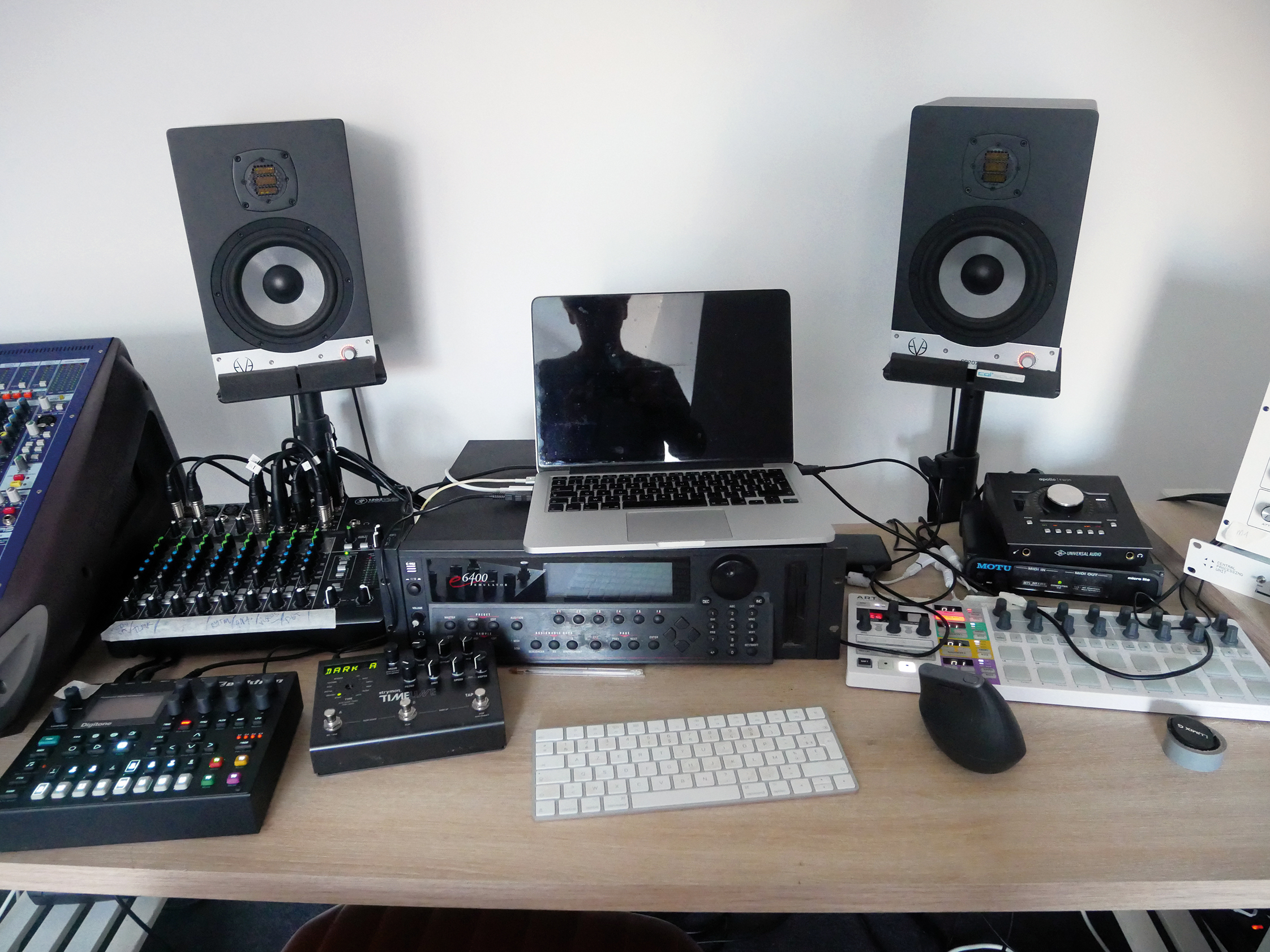
Was the more elongated process any different to how you normally work together?
M: “Most often I’ll start writing one-minute ideas for a couple of tracks that don’t really have a structure but will have a distinct sound or musical idea that’s interesting, then I send that to Louisahhh so that she has time to process and write lyrics around them. Generally, she’ll record some vocals to see what works and send them over for me to start figuring out how I can integrate them into the track.
“We finished everything together in my studio in Nantes, going through everything to decide what works and what doesn’t, reworking the instrumentals and rerecording vocals so we can glue everything together. It makes sense that we should both have a say in a way that’s organic rather than making yes or no decisions remotely.”
Louisahhh, can you give us some insight into the driving force behind some of the lyrics?
L: “We’re talking about the post-Covid landscape that has created a lot of disillusionment. We’ve touched these places in our music before and you mentioned our sub-cultural industrial/EBM influences, and it feels important to me as a songwriter to make music that speaks to people who might feel like they don’t fit in or have a voice in an environment that often pretends to be okay when it definitely isn’t.
The best I can possibly do is be a channel for the work, and show up with my knives sharp and ready
“This may sound pretentious, but I feel that the best I can possibly do is be a channel for the work, and show up with my knives sharp and ready. The record itself deals a lot with themes of depression and body autonomy – the song Vixen is talking about abortion in America and was written the day of the Uvalde shootings in Texas.
“There are definitely political elements to our work that not only communicate angst and disillusionment but also the ferocious hope that there can be some grace on the other side of that.”
The dark ambient track America is a little different to the others in its approach…
M: “This track actually had drums on it at first and I started writing those before adding background vocals and some cinematic elements. Then Louisahhh came up with some lyrics that resonated with the current political situation in the US with regards to abortion rights.
“Once I had those, I realised the drums would no longer work because they would draw too much attention to the groove or the beat. A distinctive rhythm has consequences on how your body and brain processes music, so removing
the drums opened up a space that could be filled by Louisahhh’s voice.
“The vocals are spoken word somehow, so we decided to process them in the same way we would process the drums, creating different layers that would have an unavoidable presence.”
Did you set up a vocal booth in your studio to record Louisahhh’s vocals?
M: “Actually, no [laughs], we recorded in the same room but I’m lucky that the room does not have much reverb in it. It’s just the two of us and I can keep quiet, so we don’t really need to find a separate place to record.”
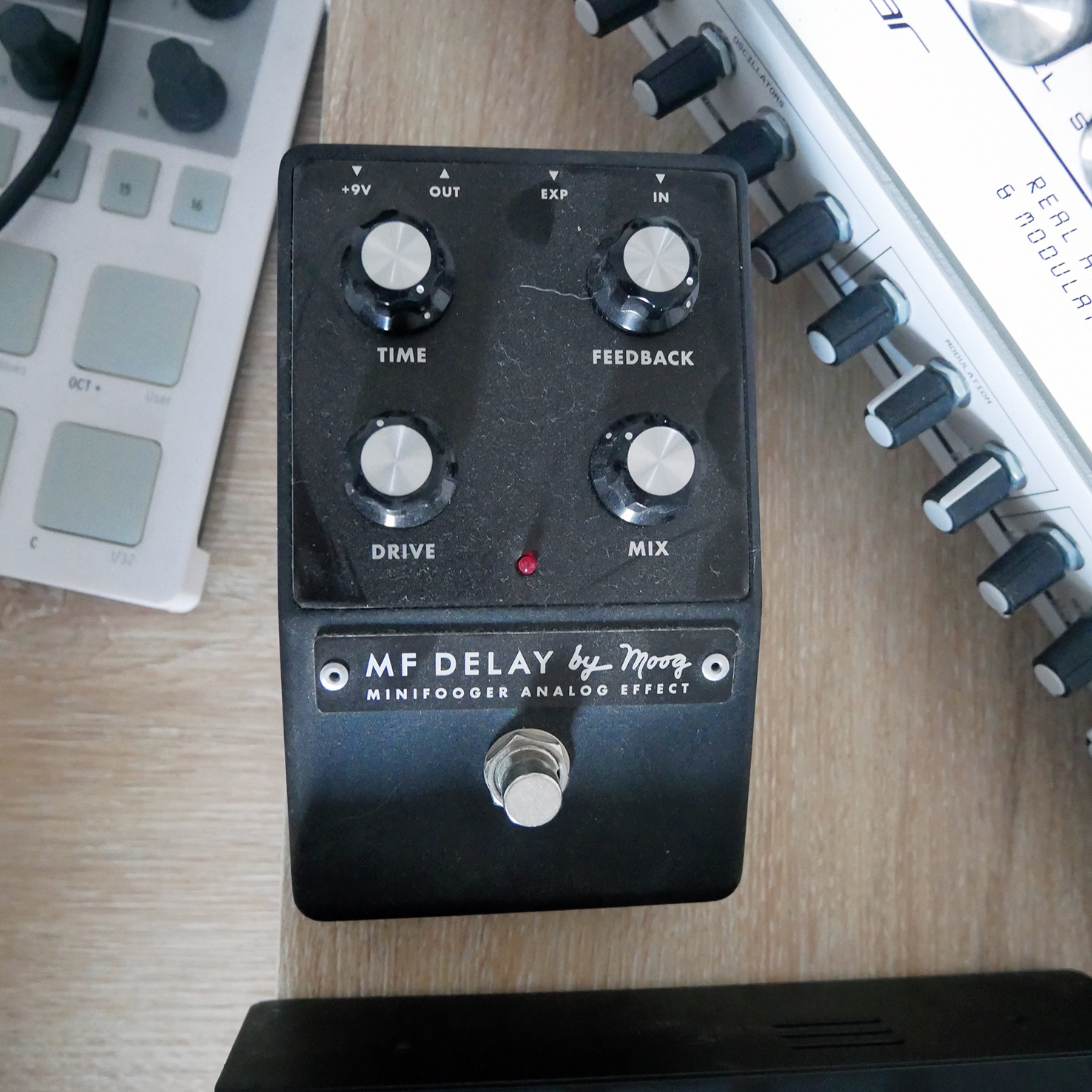
How do you tend to rev yourself up for the vocal performance Louisahhh?
L: “On the early Bromance stuff Mael would have to leave the room – or ideally leave the premises so I could lay down a sultry, sexy little vocal [laughs]. Now he sits staring straight ahead while I scream at the top of my lungs, so it’s funny how the level of our comfort together has improved. A lot of that stems from me working on my voice through a lot of vocal training and live performance.”
So due to your familiarity with Mael, you no longer need to psyche yourself up?
L: “Nantes is like a haunted city in Brittany and has lot of docks that used to be ports for slave ships. I’ll just go for a walk in freezing Nantes next to this haunted river, listen to the track on loop and come back with a song.
“In the past, Mael would send over sketches weeks before we’d get in the studio together and I’d show up with stuff I’d written and just record, but this time we did a lot of work in a short period of time.
My creative process is usually different track by track but always starts with me jamming with hardware gear
“I sometimes wonder whether this will be the last song I might have in my body or will ever write again, so I’ve started to feel more comfortable with being unprepared. Because we worked faster to perfect and tweak things, that immediacy informed the work in a way that was really satisfying.”
Mael, what gear are you using to initiate tracks?
M: “My creative process is usually different track by track but always starts with me jamming with hardware gear. I have lots of Elektron gear like the Elektron Rytm and the Analog Four and they’re very handy because they all have incredible little sequencers with crazy possibilities.
“They allow you to go into so much detail and do so many wild and live things that you can take a different direction in a second. I start with that and then I turn to a few different synthesisers. On this album, mostly the Analogue Solutions Telemark, which is a semi-modular clone of an SEM synth with two oscillators.”
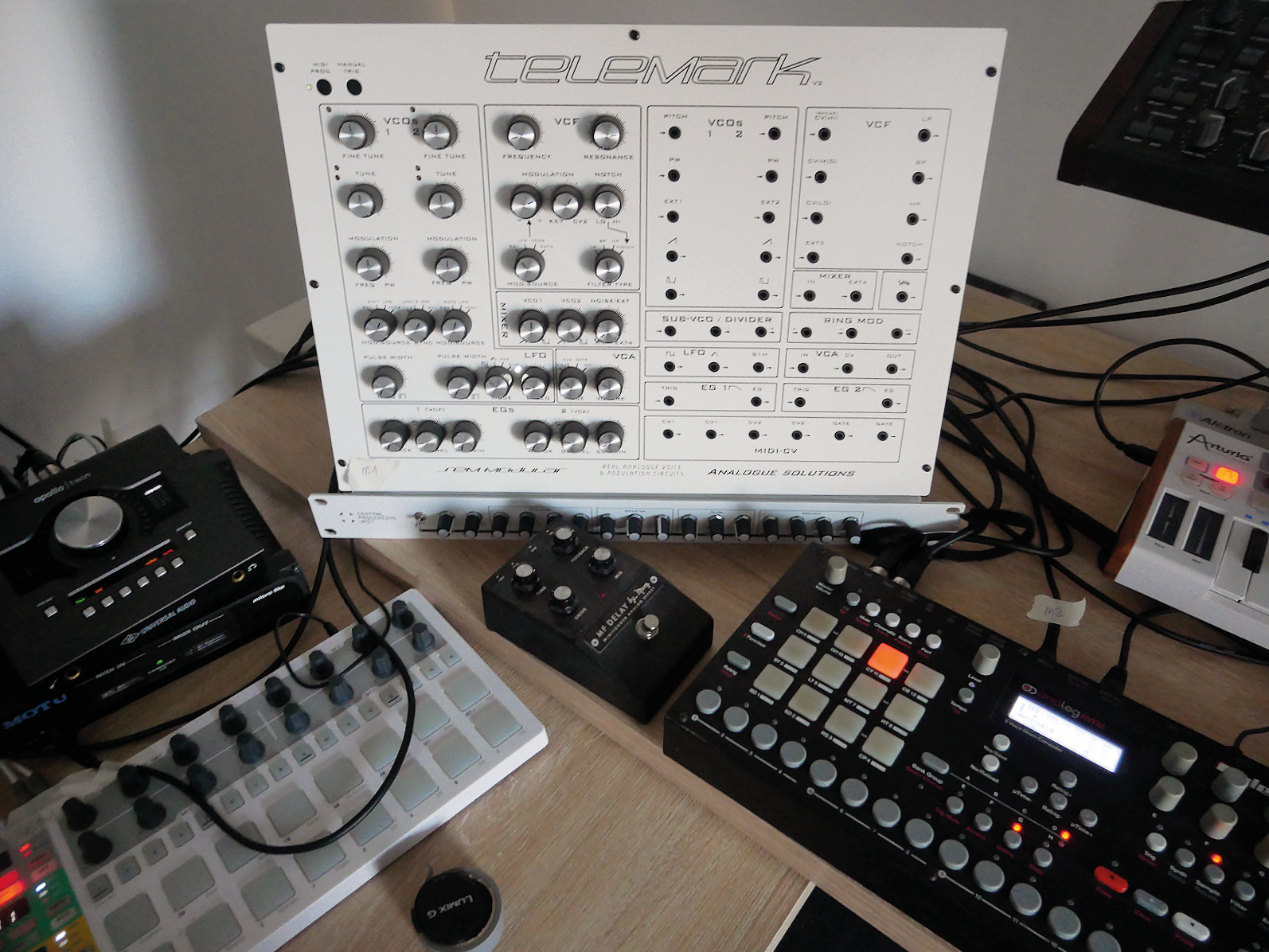
Modular gear sounds well-suited to your gritty sound…
M: “I don’t use modular too much, I just happen to love the sound of this specific synthesiser. It has a patchbay that allows you to reroute oscillators, LFOs and envelopes to different points, which is handy but because it’s already pre-patched you can use it like an SH-101 or Moog by just plugging it into MIDI and playing notes.
“I’m not really into the modular craze and not a modular sorcerer that uses it for sound design; I prefer to do that with the modulation capabilities that the gear already has rather than building my own machines using smaller blocks.
“I might use the patchbay to do something specific, like making a kick drum, snare or special SFX, but I’m most often using the Arturia BeatStep’s sequencer with CV gate. I just plug the CV out from the sequencer to the CV in on the Telemark and filter the sequencer individually from the pitch, which is cool for creating interesting sequences.”
You tend to assign distortion to a lot of the sounds on the record too…
M: “Actually, most of the time it’s not distortion I’m just overdriving a drum machine or a synthesiser into a mixer or preamp, pushing the sound and bringing up the transients. That brings out different things depending on how much you’re driving it out.
Most of the time it’s not distortion, I’m just overdriving a drum machine or a synthesiser into a mixer or preamp to bring out the transients
“For example, if you pitch three tom drums differently and process them, it’s going to bring out different harmonies depending on the amount of overdrive you’re putting them through. Then, depending on which mixer you use to overdrive those sounds, you’re going to get a different kind of colour.
“I’ll try to do that within one channel of my Mackie Mixer and the same thing again on my Midas Venice mixer and play with the EQ to see what kind of impact it will have on the distortion I’m getting through overdriving the signal. For most of the tracks on the album, the initial ideas were produced that way.”
Does physically overdriving the sound produce a more satisfying effect?
M: “I really love the process of how much control it gives me on the actual signal. Let’s say you have a distortion pedal and plug it in, unless you put an EQ before that, which is not very practical, you only have dry/wet buttons to modify the signal and affect the sound.
“The way we’ve been doing it in the studio, including on the vocal sometimes, gives you so much more control because there are so many elements that you can change from the amount of signal that goes in. I will also chain the EQ so I can run the signal through both mixers and overdrive one or the other, or both, in different ways. This gives you all sorts of interesting processing points, which makes it more flexible.
“Of course, I’ll also use some distortion plugins and pedals at times, but that’s usually a side element – I won’t use it for the core of the track because having that precise control is paramount to how I want things to sound and I’m pretty sure people will hear that on the record. It’s also fun, which is important too.”
You’re using Ableton Live for recording?
M: “All the sound production generation is made entirely by hardware machines and then we’ll record everything into Ableton as if it were a multi-track recorder.
“I could use my Venice mixer for the final mixdown but it’s so much more convenient to do it within Ableton Live for the simple reason that you can go back to a mix and fix things if you realise after a few weeks that something’s not working. UAD plugins are also incredibly good and give you so many options when it comes to using interesting EQs and compressors.”
What sort of decisions were you making during the mixing process Louisahhh?
L: “For these album sessions there was an emphasis on not tweaking things too much. A lot of the recordings were one take and the sonic tools we were working with were often very minimal. Mael would distort three kick drums and say these are the only sounds allowed on the song, so there was no fussing, which is ideal because the fussier you get the more potential there is to fuck things up.
Mael would distort three kick drums and say these are the only sounds allowed on the song
“One of our drummers from the live band does a lot of mixing and he gave us early feedback that we’d never considered on how to make a spacious record where the sounds aren’t all in your eyes. He made a lot of good suggestions on how to fill out the sonic landscape, which was really helpful because it made us think about sound in a different way. The feeling of the record in terms of how embodied and physical it sounds was a result of that early feedback.”
You already perform together live, so presumably you’ll feel comfortable touring this album together?
M: “That’s the whole point. We’re planning to tour next spring and have a special project built that we like to call ‘hybrid live’.
“We’re bringing drum machines and synthesisers on stage and Louisahhh will be singing so we’ll be able to play any track from our back catalogue, but we’ve also decided to combine CDJs within that live setup so we can DJ tracks, rework them with vocals on-the-go and play a live track here and there and beat match everything.”
L: “We want to cultivate a level of presence, intensity and, ideally, a connection to the crowd in the moment. At this point, I feel that’s vital. It may need to be renegotiated depending on how it goes [laughs], but we may move away from solo DJ sets for this album cycle and exclusively focus on performing together, whether that’s 90 minutes of original material or a six-hour, all-night hybrid set with live vocals woven in. At this moment in our relationship, just DJing feels like phoning it in.”
Maelstrom & Louisahhh's new album Sustained Resistance is out February 10 on RAAR.


